Cherokee Purple vs Black Krim: What’s The Differences And Which One Is Better? Purple Cherokee and Black Krim tomatoes are two of the most popular varieties available on the market. They have a similar appearance and are both eaten widely, but if you had to plant one which one would it be?
Both Purple Cherokee and Black Krim are Indeterminate,open-pollinated heirloom varieties of black/purple tomatoes. Both varieties produce a modest harvest that is approximately 15 to 20 lbs per year with Purple Cherokee producing a larger fruit of approximately 12 oz whereas is Black Krim produces an 8 ounce fruit that is considered to have a more intense flavor than the purple Cherokee tomato.
An image of the two varieties side by gives you an idea of the size difference.
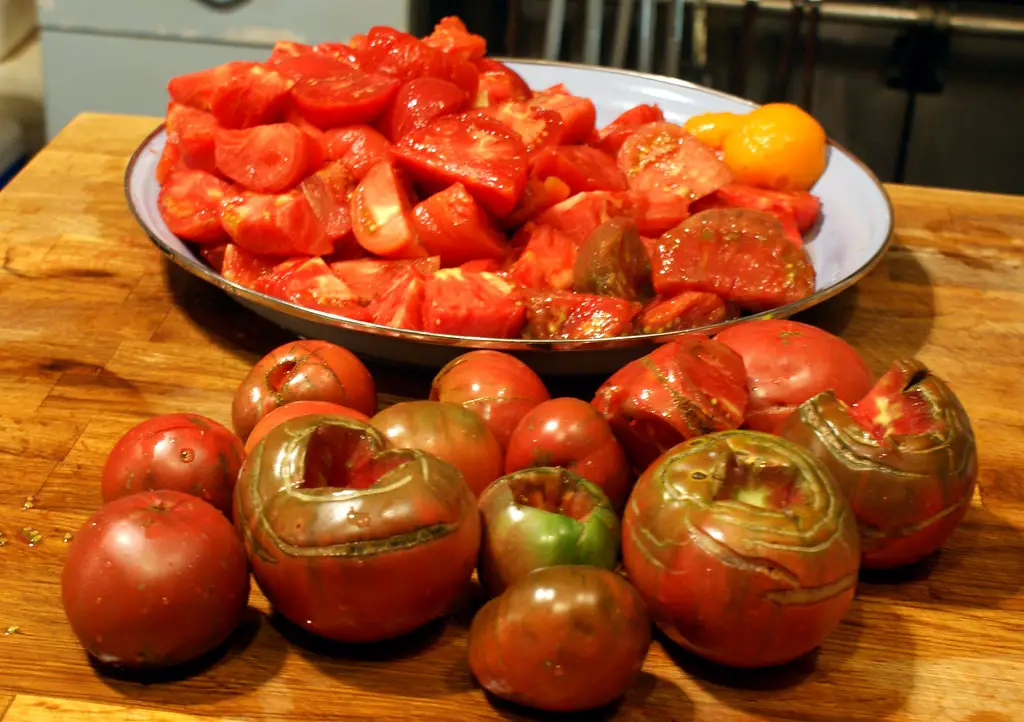
In terms of the fruit that I personally prefer my preference is always to go for tomatoes that have a more intense flavor hence I favour the Black Krim tomato over the purple Cherokee. However, both are lovely tomatoes that most home gardeners would be happy with.
If you need to purchase seeds I would highly recommend that you visit seeds now as they have an excellent range of heirloom variety tomatoes at a very low cost to see the varieties that are available and their cost click here.
About Purple Cherokee Tomatoes
Purple Cherokee is a popular heirloom beefsteak variety that produces purple-red fruit that is approximately 12 oz in weight. This variety is believed to have been cultivated for approximately 100 years by a family of gardeners who received the seed initially from a cherokee tribe. This variety eventually made its way to Craig Lehoullier in North Carolina in the 1990s who cultivated and tested the variety.
He was impressed with the results and sent the tomatoes to our range of friends he had at different seed companies which paved the way for the commercial availability of this variety according to gardenerspath.com.
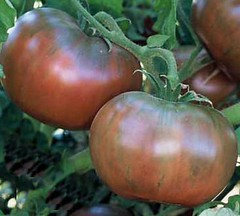
About Black Krim Tomatoes
Black krim tomatoes which are also known as Black Crimea is an heirloom tomato that originated in the Ukraine. The variety became available in the US in 1990 around the same time as the development of the Purple Cherokee. It is believed to be the first commercially available black tomato in the United States.
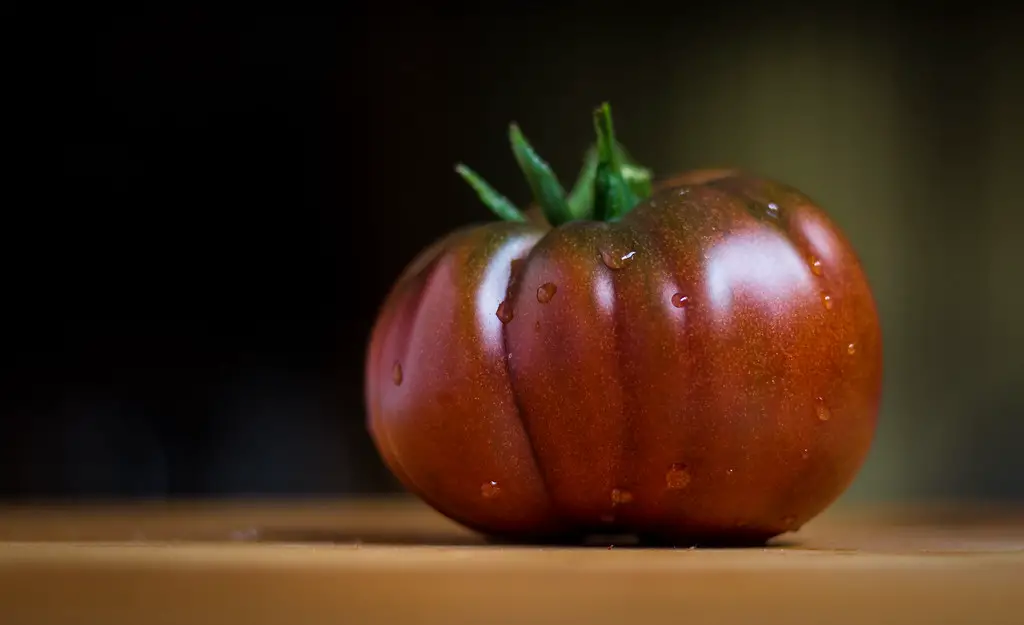
How To Grow Tomatoes
Tomatoes are a frost-sensitive plant that belongs to the Solanaceae family which also includes peppers, eggplant, and potatoes, that require warm conditions to thrive. As such the seeds are normally planted in spring, however, if you live in a location where the growing season is short is it advisable to try and start them off early indoors.
The earliest time that you can plant seeds is typically 4 to 6 weeks before the last frost of the season. To save the seeds start by filling up a seed tray with a good quality seed raising mix. If you are using a modular seed tray it is recommended that you plant 2 to 3 seeds per cell to ensure that you have at least one plant come up in a cell.
If all three plants germinate then it is advisable to thin to the strongest seedling. In terms of the number of seeds that you should plant it is advisable to aim to produce approximately 50% more seedlings than you think you will need. The reason for this is it will make 100% sure that you have all the seedlings that you need as some seedlings can be attacked by slugs and snails when they go out in the garden.
If you live in a relatively cold climate you’ll find that the temperatures even inside may be quite cold at different times of the day which means that it may be difficult to control the temperature of the environment where you place the seed tray. The easiest way to overcome this issue is to use a heated propagation tray because it will maintain a consistent temperature and humidity.
As the heated seed propagation tray is relatively cheap and inexpensive we highly recommend that you purchase one if you are planning to grow heat-loving plants in cool climates. The particular product that we recommend is the iPower Heating Seed Starter Germination Kit which features a humidity dome and a replaceable cellular seed tray.
These features ensure that the climatic environment will remain consistent and the unit will last a long time as the seed tray within the unit can be replaced extending its life. To see the latest price click here on Amazon.
The seeds should be planted at a depth of 0.5 inches (1 cm) and will typically take 7 to 10 days to germinate in warm conditions. The seedlings will need to spend at least 4 to 6 weeks in the seed trays before they are large enough to be planted out in the garden. During this period it is important to water the plants regularly to ensure that the soil remains moist.
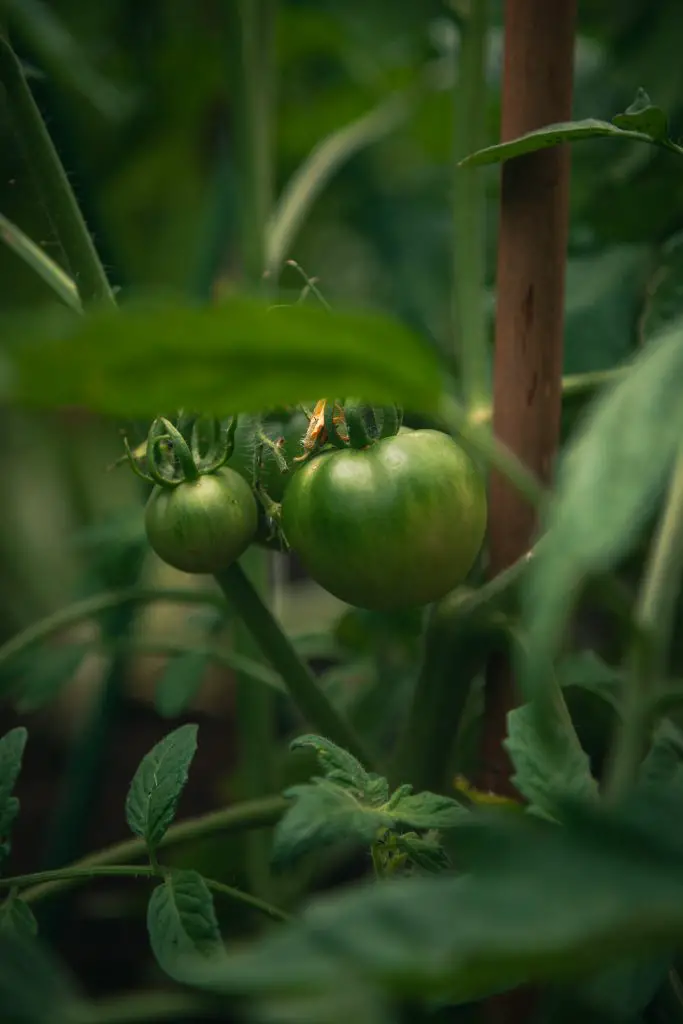
Planting Tomato Seeds Out In The Garden
The tomato seedlings should be planted outside in the garden only if the temperature is greater than 15 or 20°C (59 to 68°F). If it is below this level it is advisable to pot the plants on and continue to grow them indoors until the weather warms up sufficiently.
When placing the tomato plants into the garden they should be spaced approximately 1 1/2 to 2 ft apart in rich, moist, and free-draining soil that has plenty of nutrients in it. To improve the quality of the soil it is advisable to add a bag of compost prior to planting.
As both of these varieties are indeterminate tomatoes, also known as climbing tomatoes, you will need a relatively tall support structure to get the best out of the plants. While it is traditional to use a single tomato stake I personally find that they are not tall enough for tomato plants. Additionally, they do not allow enough anchor points for a mature tomato plant.
To overcome this issue I tend to use a trellis or even better, temporary fencing as it is cheap, sturdy, easy to erect, very tall, and has a number of points that the plant can be tied to.
Caring For Tomato Plants
Once the plants are in the ground and begin to grow and develop it will be necessary to regularly tie them onto the support structure. To ensure that the plant does not become an unwieldy mess it is important to remove the side shoots of the plant as they develop to reduce the number of stems.
The side shoots of the plant are those small shoots that appear on a 45-degree angle between the main stem and the plant’s limbs. If these shoots are allowed to grow they will produce huge volumes of leaf and stem and not much fruit. The best time to remove the side shoots is when they’re young as they can be pinched out with your fingers easily at that stage.
However, it is important to note that while it is traditional to allow only a single stem to grow and develop academic studies have shown that the yield can be increased by having two or three stems instead of just one read more about this click here.
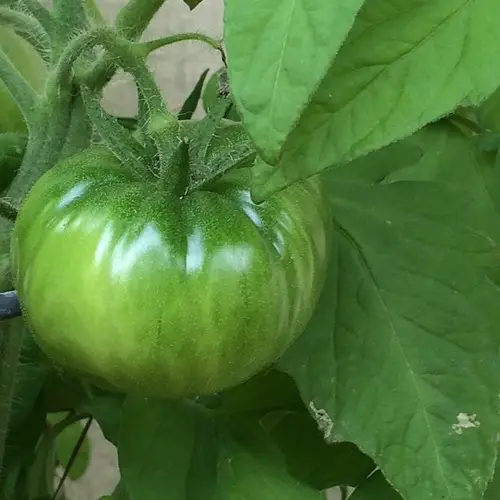
Harvesting Fruit From Tomato Plants
After some period of time in warm conditions, the tomatoes will begin to produce small yellow flowers followed by fruit. This fruit can begin to be harvested once the fruit begins to change color. The harvest will initially be modest until the plant really gets going in mid-season.
To get the most out of the plant it will be necessary to remove the top of the plant approximately 4 weeks prior to the first frost. The reason that this is done is to prevent the plant from producing any further flowers and stems which will not have enough time to ripen forcing the plant to focus its energies on ripening the fruit that it already has.
At this stage, it is also advisable to remove any very small fruit that are less than the size of a marble as it is unlikely to produce fruit that can be ripened. Once the first frost hits then all the fruit on the plant should be picked even if it is green.
This fruit can be brought inside and ripened indoors on a window sill. To accelerate this process you can also place the green tomatoes near an ethylene-producing fruit such as bananas which will speed up the process. If the fruit remains green it can still be used in cooking or for making things such as tomato relish.
Relevant Acticles
What is the Difference between a Determinate or Indeterminate Tomato?
How Many Tomatoes Can You Get From One Plant?
Why Do Cherry Tomatoes Taste Better Than Regular Tomatoes?
Is It Too Late To Plant Tomatoes? And How To Make The Most Of Summer
Can You Plant Tomato Seeds Directly In The Ground? (How To Succeed)

